The Cantellated 5-cell
The cantellated 5-cell is a uniform polychoron bounded by 20 cells (5 octahedra, 5 cuboctahedra, and 10 triangular prisms), 80 polygons (50 triangles and 30 faces), 90 edges, and 30 vertices.
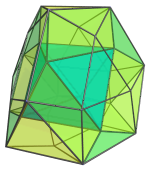
Structure
The cantellated 5-cell has a relatively simple structure. We first explore the layout of its cells in its parallel projection into 3D, centered on an octahedral cell:
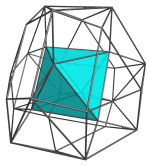
This image shows the nearest octahedral cell to the 4D viewpoint. Four of its 8 faces are joined to 4 triangular prisms, as shown in the next image:
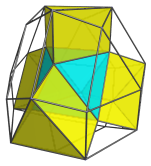
The other 4 faces are joined to 4 cuboctahedra:
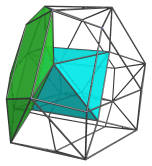
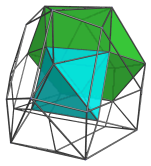
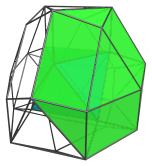
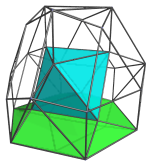
These cuboctahedra look flattened, because they are seen from an angle. They are perfectly uniform cuboctahedra in 4D.
These are all the cells that lie on the near side of the cantellated 5-cell. On the far side, a 5th cuboctahedron lies at the center of the projection, being the cell farthest away from the 4D viewpoint:
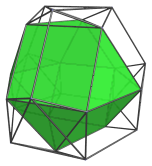
Its square faces are joined to 6 triangular prisms:
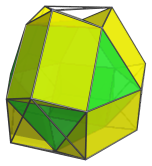
Four of its 8 triangular faces are joined to the 4 cuboctahedra on the near side of the polytope; the other four are joined to 4 more octahedra:
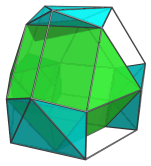
These octahedra appear flattened because they are seen at an angle; in 4D they are perfectly regular octahedra.
In total, there are 1 octahedron, 4 triangular prisms, and 4 cuboctahedra on the near side of the cantellated 5-cell. On the far side, there are 1 cuboctahedron, 6 triangular prisms, and 4 octahedra. Thus, in total, there are 5 octahedra, 5 cuboctahedra, and 10 triangular prisms.
Perspective Projections
The following image shows the perspective projection of the cantellated 5-cell into 3D. The 4D viewpoint is looking at an octahedral cell:

The nearest cell is shown in cyan, and the triangular prisms are shown in transparent yellow.
The next image shows the perspective projection with the 4D viewpoint looking at a cuboctahedral cell:
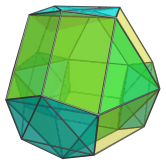
The cuboctahedral cell lies in the interior of this projection, surrounded by a layer of triangular prisms and octahedra. The octahedra are almost flat, being foreshortened by a viewing angle close to 90°. They are, of course, perfectly regular in 4D.
Coordinates
The Cartesian coordinates of the cantellated 5-cell, centered on the origin and having edge length 2, are:
|
|
Simpler coordinates can be obtained in 5D as all permutations of coordinates of:
- (0, √2, √2, 2√2, 2√2)
The 4D coordinates are derived by projecting these 5D coordinates back into 4D using a symmetric projection.




